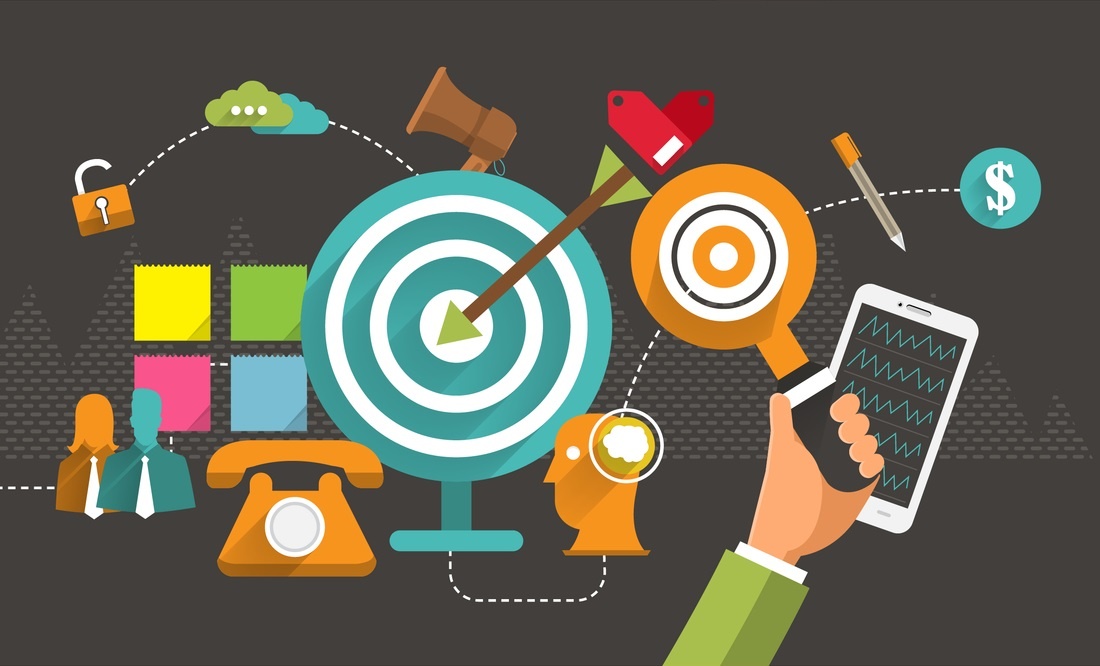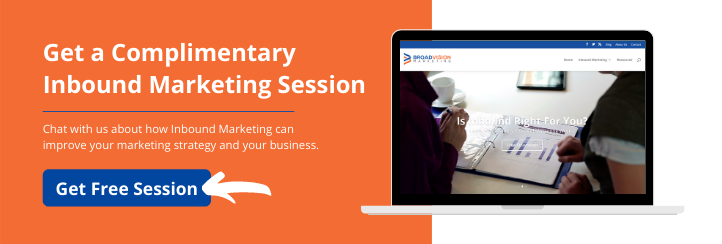Engage Your Leads With A Compelling Call-To-Action
By Jaco Grobbelaar on Tue, Jan 23, 2024 @ 05:00 AM

.jpg?width=1000&height=550&name=Untitled%20(1000%20x%20550%20px).jpg)
[This article was first published here in November 2017 and has been revised and updated.]
It's not enough to simply publish great content or have lead magnets. You want your leads, prospects and customers to take action! So how do you do that?
While inbound marketing and traditional, outbound marketing differ significantly, they do share some tactics. In addition to knowing you audience and leveraging the optimum channels, inbound and outbound marketing have one other thing in common: a call-to-action.
The CTA: This is What We Want You to Do!
Part of the problem with the "call to action" in any type of marketing is overload and overkill, so to speak. In other words, outside of traditional marketing with it's emphasis on advertising (Buy now!), the online world of marketing has become saturated with appeals and luring "Click Here" buttons. And that's the polite stuff!
Pop-ups, drop-downs, slide-ins... all those pesky ads and notices that are all calling out for an action on the part of the web visitor. They can be annoying and, over time, largely ignored. And this is what you are competing with when you craft a CTA, or call-to-action. Along with everyone else's CTAs.
The primary and, really, only purpose of a call-to-action is to just that: communicate a desired action from whoever is looking at your web page.
Granted, it can be something as basic and passive as a colored, virtual button with the words "Click Here", but usually it is far more comprehensive. But, simple or complex, the goal is to simply get a desired response from your audience.
Essentially, it is a way of letting people know that, "Hey! This is what we want you to do!"
What Makes for an Effective Call-To-Action
We've noted in an earlier post some of the logistical necessities for an effective and successful CTA. The folks at HubSpot have suggested that CTAs follow these guidelines for optimal results.
CTAs should be:
- Visually striking with copy that compels you to click the offer
- Brief: A couple of words is best, no more than five is ideal
- Action-oriented: Begin with a verb like "Subscribe", "Register", or simply "Download"
- Positioned in a spot that is easy-to-find and flows organically with the web page
- Contrasting in color from the main colors of the web page, while still fitting in with the overall design
- Large enough to be seen easily, but not so large as to distract from the main content on the page
- Clear and easy to understand: Be sure to state exactly what the visitor will get if they click on the CTA and go to the landing page
In addition to these points, try placing your CTA button, or link, in a number of locations throughout your website, but where it does not interfere with the content. In the middle and at the end of each blog post are great spots, for example.
If your CTA is simply limited to a landing page, especially one for a lead magnet, there are some creative options here, as well.

The Power of Persuasion: Your Guide to Effective CTAs in Digital Marketing
In the bustling world of digital marketing, where attention spans are fleeting and content competition runs fierce, a crucial element often sits quietly but packs a powerful punch: the call-to-action (CTA). Imagine it as the bridge between your audience's engagement and your desired outcome. A well-crafted CTA isn't just a button or a phrase; it's a persuasive nudge that pushes hesitant interest into actionable engagement.
So, what exactly is the purpose of a CTA in digital marketing? It's simple: conversion.
Whether it's capturing leads, driving sales, or boosting engagement, a CTA is the final step in your marketing funnel, guiding your audience towards taking the action you crave.
Think of it as the "buy now" at the checkout, the "subscribe" after an insightful blog post, or the "share" when a video resonates. Without a clear and compelling CTA, your audience might simply admire your content, then politely click away, leaving you with potential unrealized.
But not all CTAs are created equal. What makes a CTA truly effective? Here are some key ingredients:
- Clarity is King: Be crystal clear about the action you want your audience to take. "Learn More" is vague; "Download our Free E-book on Growth Hacking" is specific and enticing.
- Urgency Adds Spice: Create a sense of immediacy or fear of missing out (FOMO) with verbs like "Start Now" or "Claim Your Discount Today."
- Benefit-Driven Bites: Don't just tell them what to do, tell them why they should do it. Highlight the value they'll gain by taking action, like "Boost Conversions & Sales" or "Get Your Free Fitness Plan."
- Actionable Verbs Dance: Ditch the weak "Click Here." Opt for action verbs like "Subscribe," "Explore," or "Shop Now."
- Visual Cues Guide the Way: Use contrasting colors, clear buttons, and strong typography to make your CTA stand out and scream "Click Me!"
- Testing is Your Friend: Experiment with different CTAs and track their performance. A/B testing different wording, colors, and placements can reveal what resonates best with your audience.
Remember, your CTA is the closing line of your marketing story. Make it memorable, persuasive, and leave your audience wanting to take the next step. With these tips in your arsenal, you can craft CTAs that turn curious clicks into valuable conversions, transforming your digital marketing from window-shopping to a thriving storefront.
In most instances, your online call-to-action will take a prospect to what is known as a landing page. And this is where your CTA must continue to do its job effectively!
Making Your Landing Pages Look Good
While it is not absolutely necessary, the design and layout of your lead magnet's landing pages should be done by a professional if possible. Unfortunately, while you may have all the right pieces, if you don't have them the right way and in the right place and size, your page can put people off.
Granted, we're not talking about creating a work of art, but a well designed, well laid out landing page should be engaging and alluring in itself.
Building the perfect landing page for your CTA is like constructing a stage where your irresistible call to action shines. Here's how to make it captivating and conversion-worthy:
1. Headline Harmony: Your headline is the first impression, so make it count. Aim for clarity and intrigue, like "Unlock 10% Growth in 30 Days: Download Our Free Marketing Toolkit."
2. Visual Storytelling: High-quality images or videos that resonate with your target audience set the tone and reinforce your message. Think vibrant product shots for an e-commerce page or a soothing explainer video for a meditation app.
3. Benefit Bonanza: Don't just list features, emphasize the benefits your product or service offers. Focus on solving pain points and improving lives, like "Streamline Your Workflow with Our Time-Saving Automation Tools."
4. Content Conciseness: Keep your copy clear, concise, and easy to scan. Bullet points, short paragraphs, and bold highlights make it digestible and engaging.
5. Frictionless Forms: Ask only for the essential information required for conversion. Long, tedious forms are conversion killers. Remember, the quicker it is to take action, the more likely people are to do so.
6. CTA Clarity: Your CTA button should be the star of the show. Use contrasting colors, bold text, and actionable verbs like "Get Started Now" or "Claim Your Free Trial." Place it strategically, above the fold and at key points throughout the page.
7. Social Proof Power: Testimonials, logos of trusted brands, and user-generated content add credibility and social proof, reassuring visitors that your offer is valuable.
8. Responsive Redesign: Ensure your landing page is optimized for all devices, from desktops to mobiles. A seamless experience across platforms translates to seamless conversions.
9. A/B Testing is Key: Don't settle for assumptions! A/B test different headlines, visuals, CTAs, and layouts to see what resonates best with your audience. Data-driven decisions lead to landing pages that convert like champs.
Remember, your landing page is a dedicated space for your CTA to shine. By crafting a compelling narrative, optimizing for ease of use, and prioritizing data-driven decisions, you can create a conversion machine that turns clicks into loyal customers. Now go forth and build that landing page worthy of your awesome CTA!
Expert Partners for Your Inbound Marketing
An additional "best practice" for creating and publishing effective lead magnets is to get outside help. A digital marketing agency such as BroadVision Marketing can offer expertise and tools that the typical business owner or marketing manager may not have.
In addition, it often helps to have a professional marketer's perspective to assess your overall inbound marketing strategy. Acquiring the insights of a third-party professional is an investment that can bring a quantifiable return.
BroadVision Marketing offers all this and more. Let us help you make an informed decision by calling BroadVision Marketing at 707-799-1238.
In the meantime, we invite you to click on our nifty CTA below and get a complimentary marketing session on us!
You May Also Like
These Related Stories

Content Marketing With Lead Magnets [Part 1]

3 Ways Inbound Marketing Can Increase Revenue

.png?width=302&height=75&name=BVM%20Logo%20-%20transparent%20(1).png)




No Comments Yet
Let us know what you think